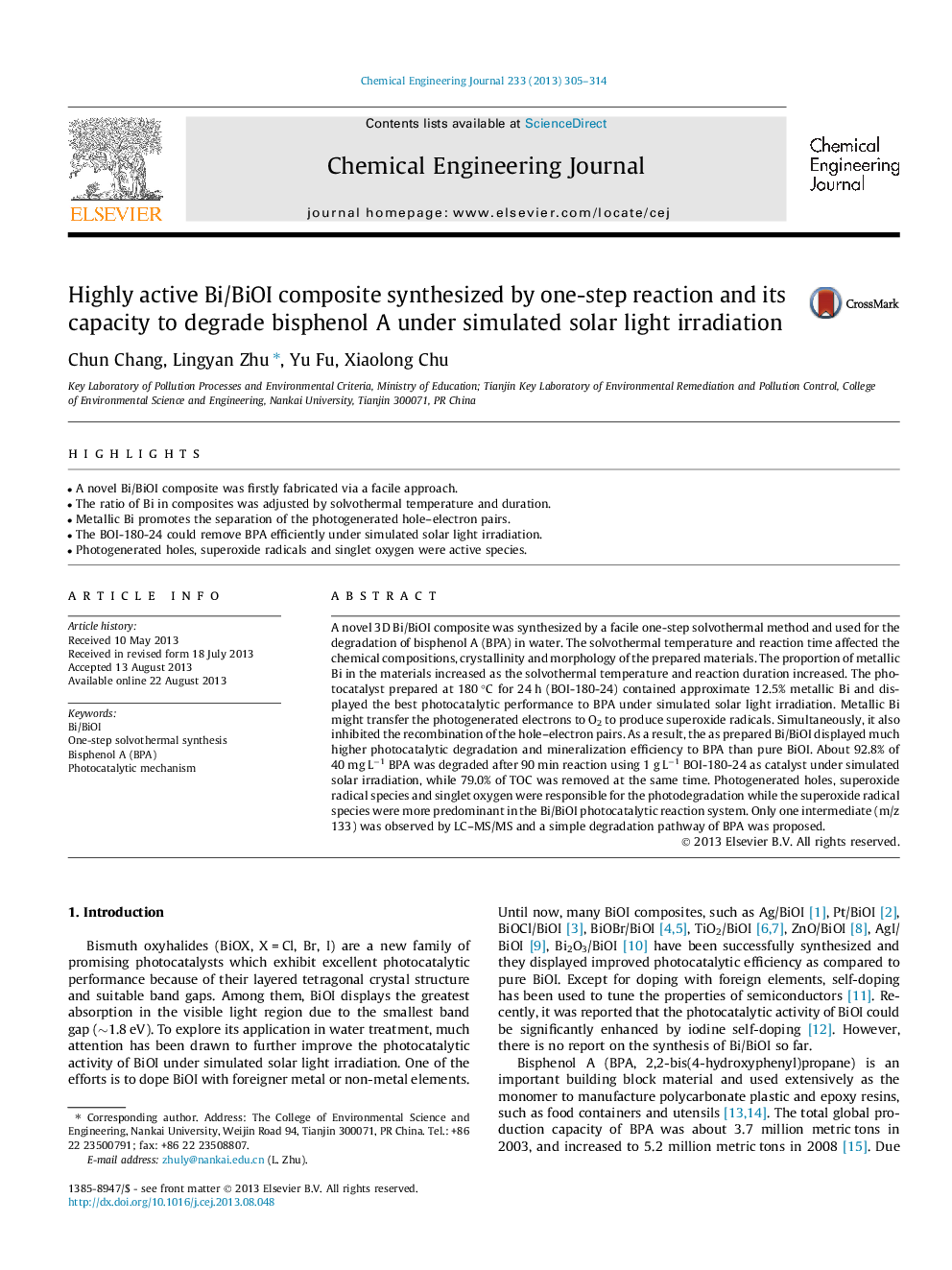| Article ID | Journal | Published Year | Pages | File Type |
|---|---|---|---|---|
| 6586787 | Chemical Engineering Journal | 2013 | 10 Pages |
Abstract
A novel 3D Bi/BiOI composite was synthesized by a facile one-step solvothermal method and used for the degradation of bisphenol A (BPA) in water. The solvothermal temperature and reaction time affected the chemical compositions, crystallinity and morphology of the prepared materials. The proportion of metallic Bi in the materials increased as the solvothermal temperature and reaction duration increased. The photocatalyst prepared at 180 °C for 24 h (BOI-180-24) contained approximate 12.5% metallic Bi and displayed the best photocatalytic performance to BPA under simulated solar light irradiation. Metallic Bi might transfer the photogenerated electrons to O2 to produce superoxide radicals. Simultaneously, it also inhibited the recombination of the hole-electron pairs. As a result, the as prepared Bi/BiOI displayed much higher photocatalytic degradation and mineralization efficiency to BPA than pure BiOI. About 92.8% of 40 mg Lâ1 BPA was degraded after 90 min reaction using 1 g Lâ1 BOI-180-24 as catalyst under simulated solar irradiation, while 79.0% of TOC was removed at the same time. Photogenerated holes, superoxide radical species and singlet oxygen were responsible for the photodegradation while the superoxide radical species were more predominant in the Bi/BiOI photocatalytic reaction system. Only one intermediate (m/z 133) was observed by LC-MS/MS and a simple degradation pathway of BPA was proposed.
Related Topics
Physical Sciences and Engineering
Chemical Engineering
Chemical Engineering (General)
Authors
Chun Chang, Lingyan Zhu, Yu Fu, Xiaolong Chu,
